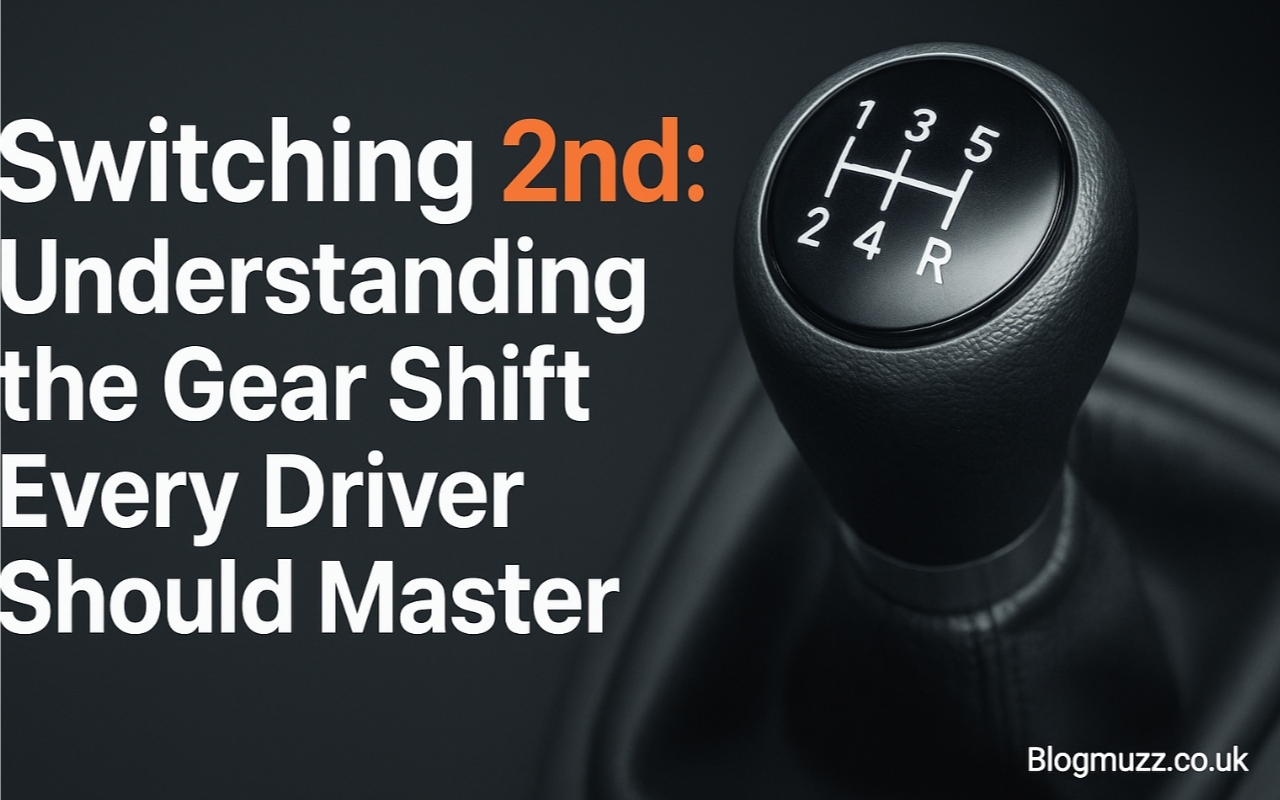Shifting gears is one of the most essential skills for any driver using a manual transmission, but no shift is as commonly misunderstood or problematic as switching 2nd. Whether you’re learning the basics of driving, trying to enhance smoothness, or dealing with grinding, jerking, or hesitation during the shift, mastering the transition from first to second gear can dramatically improve your driving experience. This comprehensive guide explores everything you need to know about switching 2nd, from common challenges and technical explanations to expert techniques and real-world driving scenarios. By the end of this guide, you’ll feel more confident, more skilled, and more connected to the way your vehicle operates.
What Does Switching 2nd Really Mean?
When people refer to switching 2nd, they are talking about the moment when a driver shifts from first gear to second gear in a manual transmission vehicle. Though it sounds simple, this is a crucial shift because first gear provides maximum torque but is not designed for sustained speed. As the vehicle begins to move, the engine RPM climbs rapidly, and shifting into second becomes necessary to continue accelerating while protecting the engine from over-revving.
The first-to-second transition is often the harshest shift for beginners because it combines multiple actions: managing the clutch, modulating the throttle, adjusting hand movement on the gear lever, and maintaining vehicle control simultaneously. Each component requires finesse, and even a minor mistake can result in a jerky motion, engine bogging, or gear grinding. Understanding the balance between clutch and throttle is the foundation of switching 2nd smoothly and consistently.
Why Switching 2nd Is the Most Difficult Shift for New Drivers
Many instructors agree that shifting into second is the most challenging part of learning manual driving. There are several reasons behind this struggle, each tied to how the vehicle responds during that initial acceleration. First gear produces high torque, which makes the car sensitive to clutch release. When switching 2nd, drivers must coordinate the clutch and throttle transition while the vehicle is already moving. This creates a new dynamic that requires different timing than starting from a complete stop.
Another reason this shift is tough is because most drivers anticipate the gear change too early or too late. Shifting too early causes the engine to struggle, leading to shaking or even stalling. Shifting too late results in the engine roaring loudly as the RPM approaches the redline. Timing is key, but timing only becomes intuitive after understanding how RPM, clutch engagement, and throttle response work together. This learning curve explains why many drivers experience uncertainty and hesitation when switching 2nd during their early practice sessions.
How the Transmission Works When Switching 2nd
To master the process, it helps to know what’s happening mechanically inside the transmission. When switching 2nd, the transmission disengages the first gear and engages the second gear using synchronizers. These synchronizers match the rotational speed of the gears to ensure a smooth engagement, preventing grinding or resistance. This is why your gear shift should glide into place rather than fight back.
If the driver releases the clutch too abruptly or applies too little throttle, the synchronizers struggle to match the speeds, causing a rough or delayed shift. Conversely, shifting too aggressively or holding the clutch halfway can cause unnecessary wear on the clutch plate or lead to a burning smell. Understanding these internal movements emphasizes the importance of smooth, coordinated actions. When you shift gently and time your clutch release properly, the mechanical components work in harmony, resulting in a seamless transition.
The Correct Technique for Switching 2nd Gear
Switching 2nd smoothly involves mastering a step-by-step technique. First, allow the vehicle to build enough speed in first gear—usually between 2,500 and 3,000 RPM for most cars. Once the engine reaches this range, lift your foot off the accelerator while pressing the clutch fully to the floor. Move the gear lever firmly and smoothly from first to second without forcing it.
After the gear engages, the key is managing the clutch release. Beginners often release the clutch too quickly, which can cause jerking, or too slowly, leading to unnecessary clutch wear. The ideal method is to release the clutch until you feel the biting point, then apply gentle throttle as you continue releasing it. This ensures a smooth transfer of power. With practice, the motion becomes fluid and natural, allowing you to switch 2nd gear effortlessly, even in traffic or on steep inclines.
Common Problems Drivers Face When Switching 2nd and How to Fix Them
Many drivers encounter issues when switching 2nd, even after months of driving. Some of these problems are minor, while others indicate deeper mechanical or technique-related issues. One of the most common problems is jerking during the shift. This usually happens when the driver releases the clutch too fast or applies the throttle inconsistently. The solution is to slow down your clutch release and maintain steady throttle input.
Another frequent issue is grinding or difficulty engaging second gear. This can stem from not pressing the clutch fully or shifting too quickly without allowing the synchronizers to do their job. A worn clutch or faulty synchronizer can also cause grinding, especially in older vehicles. If the problem is consistent, a mechanic should inspect the transmission. Finally, engine bogging—where the RPM drops too low—occurs when drivers shift too early. Learning the proper RPM range will eliminate this.
Switching 2nd in Traffic, Hills, and Real-World Conditions
Real-world driving introduces new challenges for switching 2nd. In heavy traffic, constant stop-and-go movement forces the driver to switch 2nd frequently. Smooth clutch control becomes essential to avoid jerking or rolling backward. Keeping a small buffer of space helps maintain momentum and reduces the number of unnecessary shifts.
Switching 2nd on hills requires even more precision. The vehicle may roll back if the clutch is released too slowly or stall if the throttle is applied too late. Using the handbrake technique can help beginners maintain control while shifting. In wet or slippery conditions, switching 2nd also helps reduce wheel spin, especially in powerful cars. Drivers often move to second gear earlier than usual on slick roads to maintain traction.
Expert Tips to Improve Your Shifting Skills
Improving your switching 2nd technique takes practice, but several expert tips can accelerate your progress. First, practice listening to your engine. Instead of staring at the RPM gauge constantly, learn to recognize the sound and feel of the car when it’s ready to shift. Smoothness is more important than speed; rushing only causes mistakes. Practicing clutch control in an empty parking lot can build muscle memory.
Another valuable tip is to keep your hands relaxed on the gear lever. Gripping too tightly makes your movements stiff and unnatural. Use the palm of your hand to guide the shift rather than forcing it. Also, always press the clutch fully when switching 2nd—half presses cause grinding and long-term damage. With consistency and patience, these small improvements turn into automatic habits that significantly enhance your driving performance.
How Modern Cars Make Switching 2nd Easier
Modern vehicles come equipped with features designed to make switching 2nd smoother and more accessible for drivers of all skill levels. Hydraulic clutches provide lighter pedal pressure, making clutch control easier. Rev-matching technology in performance cars automatically adjusts the engine speed during downshifts, preventing sudden jerks. Even in more basic vehicles, improved synchronizers and smoother gear ratios make the first-to-second shift more forgiving.
Some modern manual transmissions also incorporate hill-start assist, preventing rollback when switching 2nd on steep inclines. These features reduce stress and enhance driver confidence, especially in challenging driving environments. Even with these advancements, mastering the technique remains a valuable skill that every driver should strive to perfect.
Conclusion
Mastering switching 2nd is a defining moment for any driver learning manual transmission. While the shift from first to second can be challenging, it becomes second nature with understanding, practice, and proper technique. This gear change lays the foundation for more advanced driving skills and builds confidence behind the wheel. Whether you’re navigating traffic, climbing hills, or simply improving your daily driving routine, smooth switching 2nd makes every journey more comfortable and enjoyable.
Read more: techandgamedaze com: Your Ultimate Source for Tech and Gaming News



